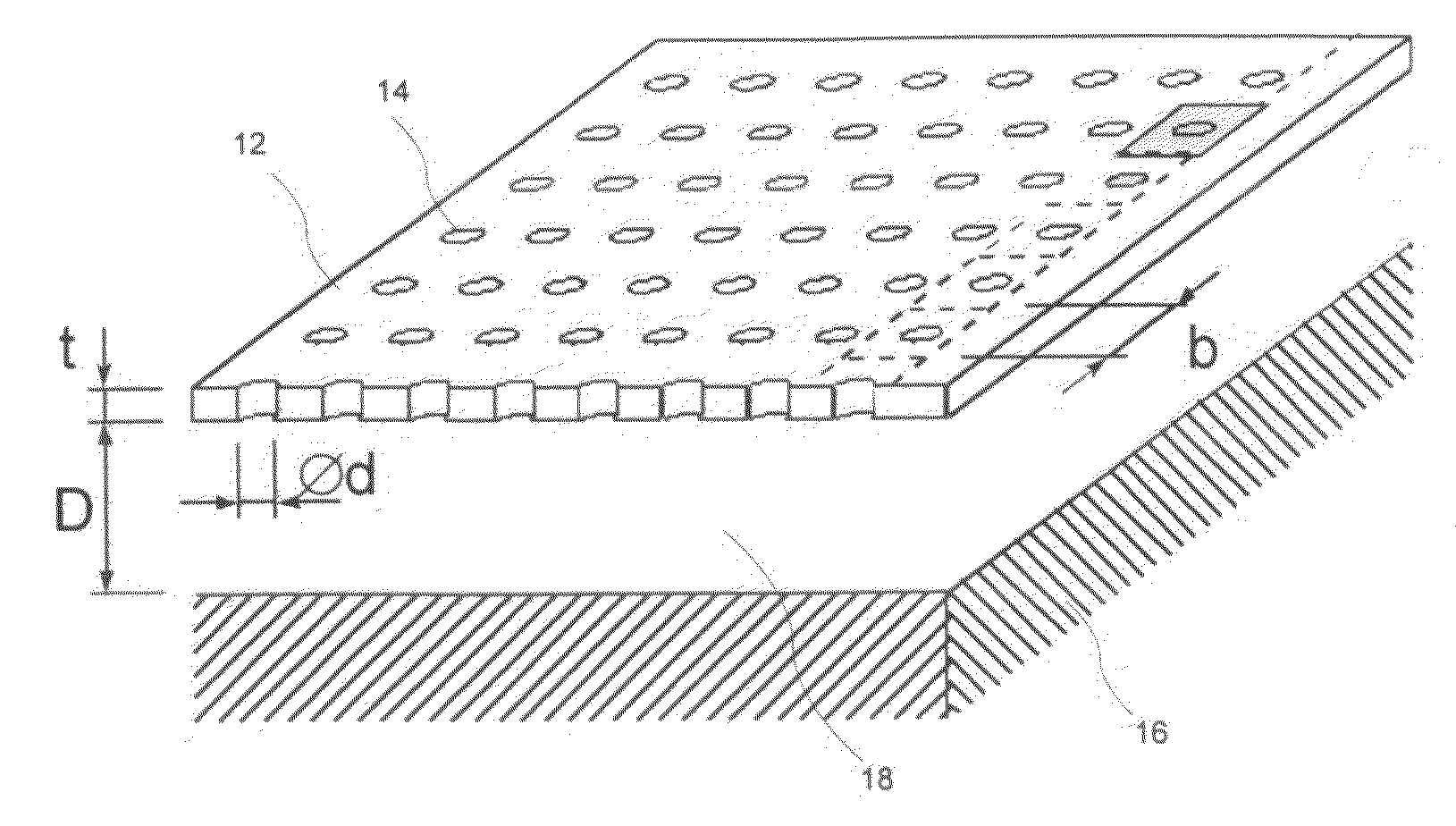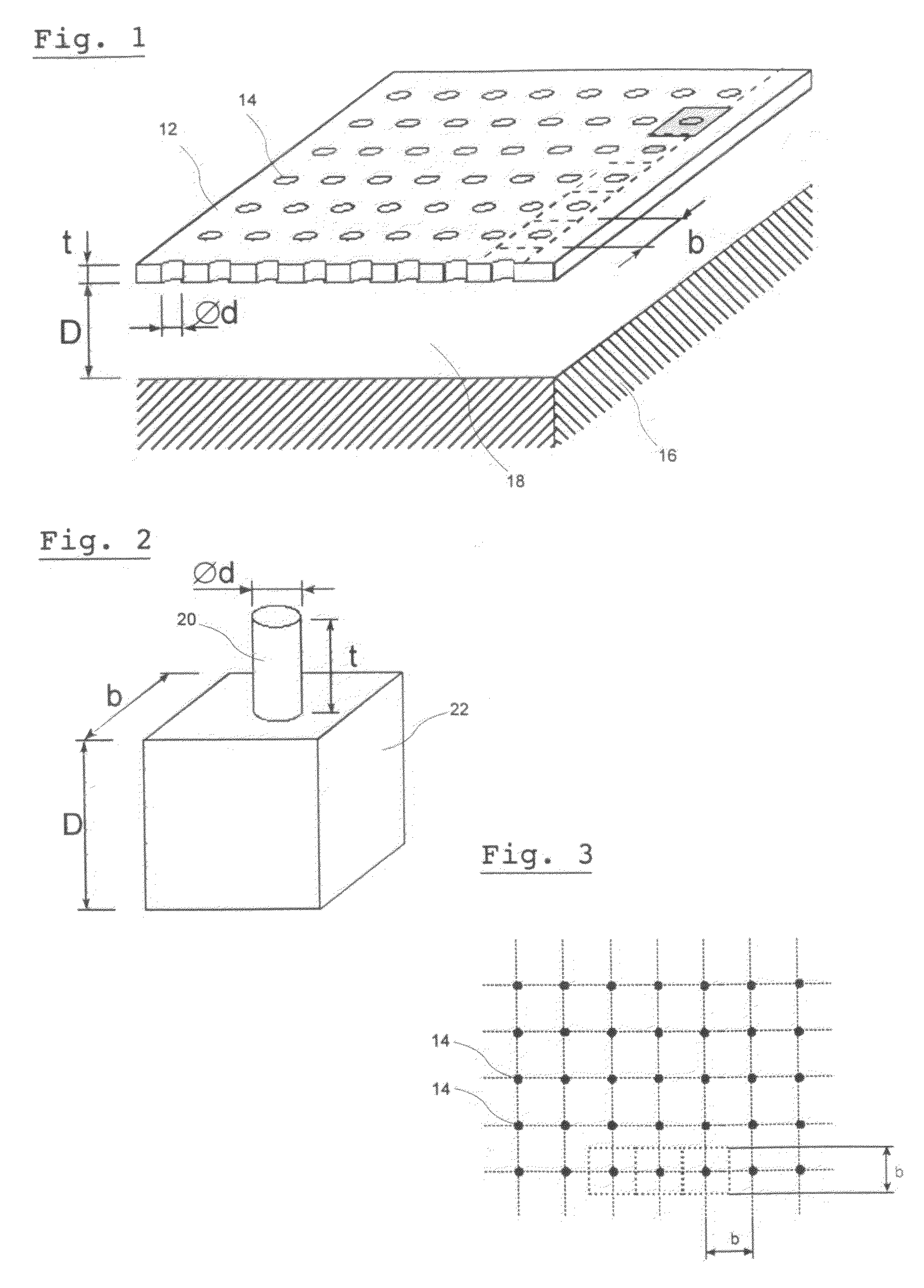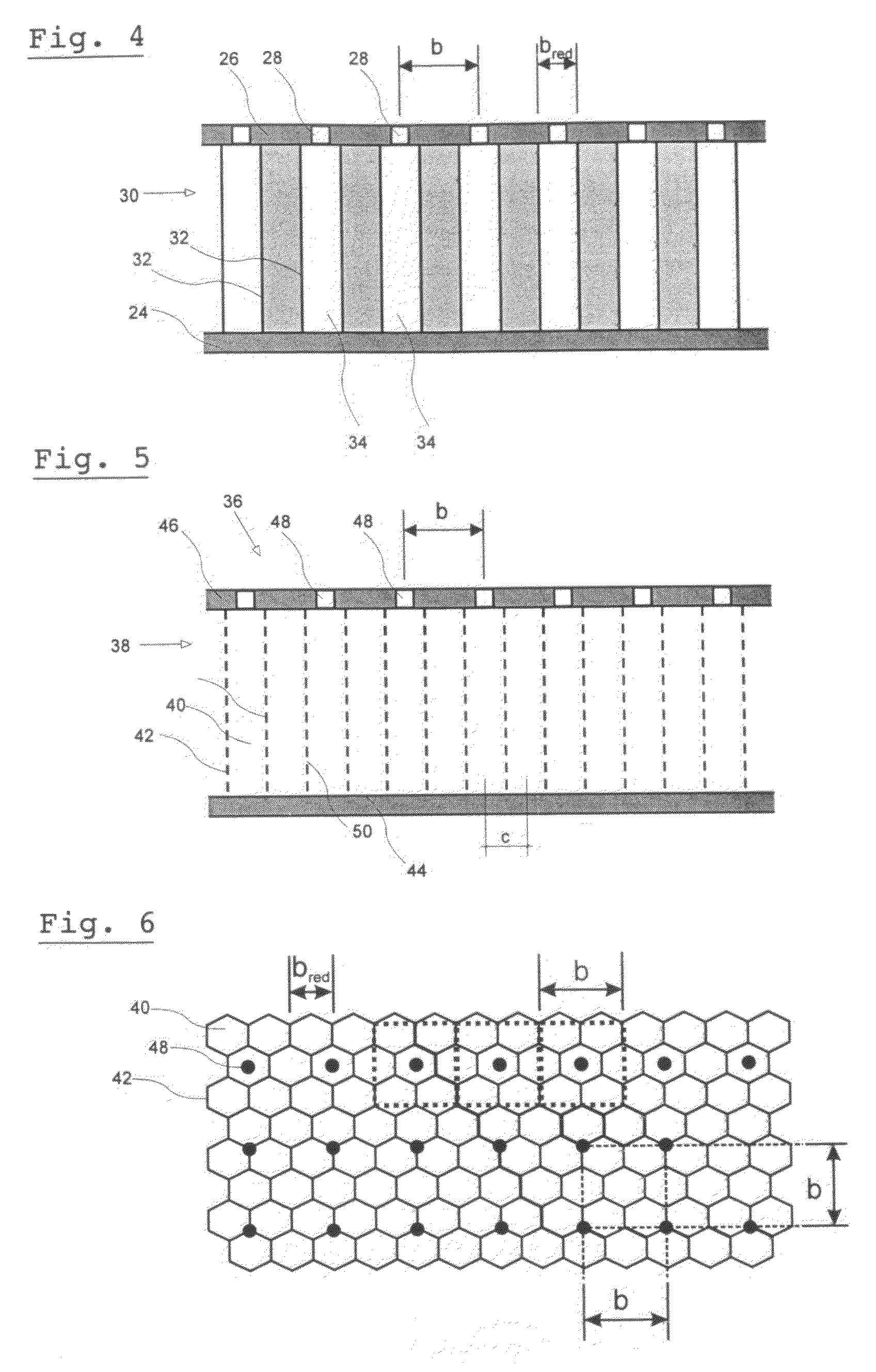Sandwiich panel for sound absorption
a technology for aircraft cabins and sandwiches, which is applied in the direction of liquid fuel engines, instruments, machines/engines, etc., can solve the problems of loss within the perforation opening, composite panels are far too heavy for aircraft use, and panels that are too heavy for large-area use, etc., to achieve precise and simple production of perforations, reduce weight, and facilitate production
- Summary
- Abstract
- Description
- Claims
- Application Information
AI Technical Summary
Benefits of technology
Problems solved by technology
Method used
Image
Examples
Embodiment Construction
[0025]FIG. 1 shows the principle design of a perforated liner resonator that comprises a perforated liner 12 which comprises a multitude of holes 14. The perforated liner 12 of a thickness t is arranged at a distance D in front of a rear delimitation area 16 so that an air volume 18 is enclosed between the perforated liner 12 and the delimitation area 16. In order to consider the way of operation of the perforated liner resonator, said resonator can also be considered to be an addition of several Helmholtz resonators. FIG. 2 shows the basic structure of a Helmholtz resonator with the four geometric parameters hole diameter d, distance between holes b, liner thickness t and thickness of the air cushion D. The Helmholtz resonator, which in FIG. 2 is shown without the volume-delimiting components, represents an acoustic resonator, which can also be regarded as a spring-mass damping system, comprising an air plug 20 in the region of the aperture 14 of the perforated liner 12, and a perc...
PUM
 Login to View More
Login to View More Abstract
Description
Claims
Application Information
 Login to View More
Login to View More - R&D
- Intellectual Property
- Life Sciences
- Materials
- Tech Scout
- Unparalleled Data Quality
- Higher Quality Content
- 60% Fewer Hallucinations
Browse by: Latest US Patents, China's latest patents, Technical Efficacy Thesaurus, Application Domain, Technology Topic, Popular Technical Reports.
© 2025 PatSnap. All rights reserved.Legal|Privacy policy|Modern Slavery Act Transparency Statement|Sitemap|About US| Contact US: help@patsnap.com



